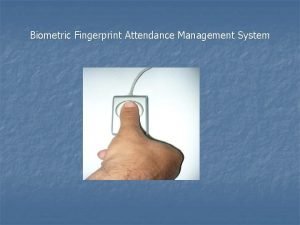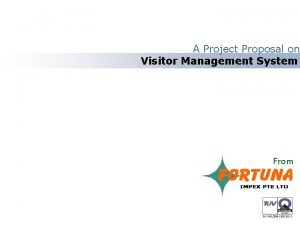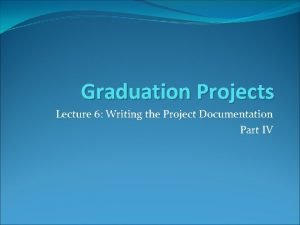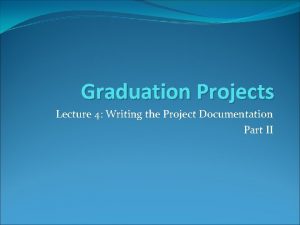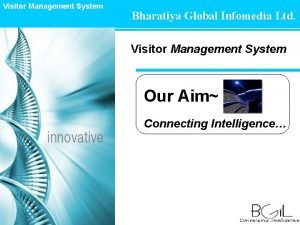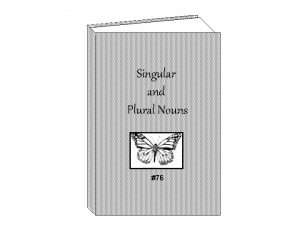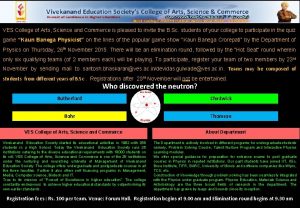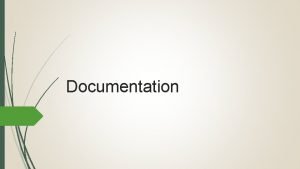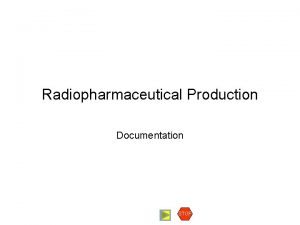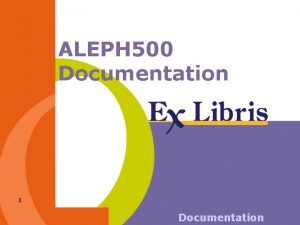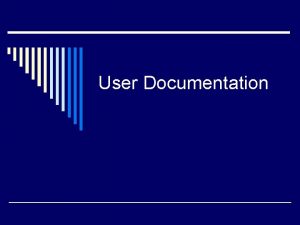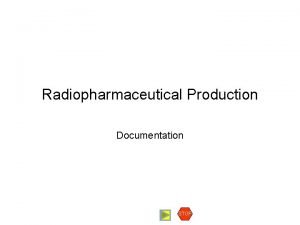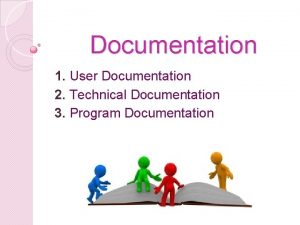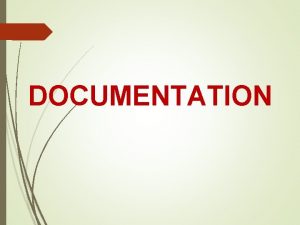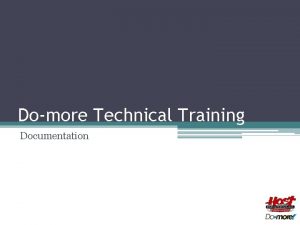VES Architecture and Documentation Project VES Standards Jim









- Slides: 9

VES Architecture and Documentation Project VES Standards Jim Farmer instructional media + magic, inc.

Why standards? l Enable us to work together in a broader community – Communication – Collaboration l Share the results of our work l Achieve economic-level of utilization

Why standards in VES l Reduce costs and improve quality l Crate an open and extensible system l Support wide sharing, collaboration, and reuse of learning objects in VES and between states l Create a new e. Learning market space l Sustain feature-rich future expansion and growth

Key standards-based technologies l l l IEEE P 1484 Learning Technology Systems Architecture XML pervasive, from portal to data storage IMS educational, assessment and learning objects IETF and W 3 C Internet - calendar, vcard, bookmarks, MOTD, security, caching, etc. Java J 2 EE enterprise programming

IMS instruction and learning l l l Shared use of curriculum, instruction, and assessment resources Learning Object Metadata for rich discovery and reuse of learning objects Question and Test Interoperability for interstate exchange of high quality standards-based test items Competency Profile standards for maintaining information on individual student achievement Content Packaging standards for publishing and exchange of learning objects

XML markup language l l l XML provides VES access to the evolving semantic Web XML is pervasive and drives all aspects of VES XML and XSLT are the basis for portal and channel architecture XML makes possible high levels of personalization, localization, and customization of the user interface XML is the core technology in the VES Application Development Framework XML, SOAP, UDDI and WSDL provides access to the world of Web Services outside of VES

The Java programming language l Runs on almost all computers and operating systems “anyone can use the software” l A large and growing user-community l An expanding technology l Enterprise J 2 EE has open interfaces to EJB, servlets, JSP, JMS, JNDI

VES is committed to: l Using relevant standards when they exist, l Extending standards when they are inadequate, l Building standards when they are needed, l Providing leadership to advance standards in the K-12 world

VES is uniquely positioned to advance standards l l l Two members on the Schools Interoperability Framework Board Contributing member in Instructional Management Systems (IMS) standards project Committed to, and building, a conforming implementation of the IEEE P 1484 Learning Technology Systems Architecture (LTSA) Close partnership with Harvard’s Achieve. org, publisher of national learning standards index Participant in SCORM, OKI, IEEE, and other key activities Creater of Open. VES and the Open Education License
 User documentation standards
User documentation standards Gym management dashboard
Gym management dashboard Fingerprint attendance management system
Fingerprint attendance management system Visitor management system project documentation
Visitor management system project documentation Graduation project documentation
Graduation project documentation Documentation for graduation project computer science
Documentation for graduation project computer science Team visitor infomedia
Team visitor infomedia Customer service standards table
Customer service standards table Nouns that don't change
Nouns that don't change Ves college of arts science and commerce
Ves college of arts science and commerce


